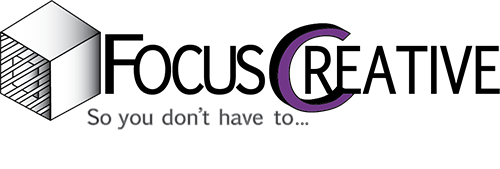
On-Page SEO: What is on page SEO and how does it work?
What Is On-Page SEO?
The process of improving the visibility of a web page by modifying its content, tags, and internal links to increase traffic is known as on-page SEO or on-site SEO. This technique enables users to better understand a web page and reap multiple advantages.
The importance of on-page SEO
The amount of traffic is the first factor. 67.60% of all clicks go to the top five organic results on a search page. The next five only make up 3.73% of the total. And from there, it falls. Thus, you must be close to the top if you want traffic.
Second, the click-through rates (CTR) of high-ranking websites are significantly higher. The average organic CTR for the top Google mobile search result is 26.9%.
You can begin to see the effect organic SEO can have on your bottom line when you consider that 92.4% of internet users who use their mobile phones to search for local businesses go there the same day. Additionally, on-page optimization has a big impact on your organic ranking. It is like the backbone of a website. Also, It plays a crucial role in making sure that search engines understand and appreciate your website’s content. These optimizations help search engines crawl and index your website more effectively, which can lead to better visibility in search results.
Essentially, on-page SEO acts as a guidebook for search engines, helping them navigate and interpret your website’s content accurately. Without it, your website may struggle to rank well and attract organic traffic. As a result, by paying attention to on-page SEO, you increase the likelihood that users will find and visit your website when they are looking for pertinent information or goods.
What components of on-page SEO are the most crucial?
There are some significant factors that are essential to a site’s success in addition to the on-page SEO techniques. For an on-page strategy to remain effective, it must be optimized. Writing quality content, using metadata, and internal linking are the three main methods for accomplishing this.
Meta data:
The title tag and meta description featured in search engine results, which are used to list pages, are located inside the HTML code of a specific page. Through a search engine, the meta title and description can be extracted from the link attached to that page. Optimizing your meta data with relevant keywords and thorough content will make it easier for users and search engines to understand what your page has to offer.
Website Content
Secondly, well-written content is also crucial. It connects the words on your website to the keywords in your metadata. Well-written content that uses the appropriate keywords will meet the needs of both users and the search engine. Other aspects of marketing can benefit from content marketing as well.
How to write SEO-friendly content
For websites and businesses to create content that is EAT-friendly for Google results, Google has provided guidelines. This refers to content that is expert, authoritative, and trustworthy. While content is a specific ranking factor for on-page SEO, EAT is not. Ensure that your content is of high caliber and tightly focused on the meaning and intent of your target keywords. According to Google’s Webmaster Guidelines, the following types of content are appropriate:
- Build an informative and helpful website and write pages that accurately and concisely describe your content.
- Consider the search terms visitors might use to find your pages, and make sure those terms are used on your site.
- Allow all site assets that would significantly affect page rendering to be crawled in order to help Google fully understand the contents of your website, such as CSS and JavaScript files that impact page understanding.
- Write for humans first, not search engines.
- Don’t mislead your customers.
- Finally, consider what makes your website special, worthwhile, or interesting.
Site structure and internal links
A search engine needs to be able to properly crawl your website, so it needs to have a certain structure. Engines will be able to direct a user to a page pertinent to their query if your site has easy-to-use navigation bars, footers, and anchor links. If your website is difficult to navigate, the search engine may have trouble finding the pages on it.
A site should have a “clear conceptual page hierarchy” and important links should be simple to crawl for Googlebot to index, according to Google’s Webmaster Guidelines.
On page SEO best practices
Are you curious about the techniques you can employ to enhance your rankings through on-page SEO? On-page SEO involves optimizing your website’s content and code for search engines. By implementing effective on-page SEO strategies, you can boost your website’s position in search results, leading to increased traffic and potential leads.
Here are several on-page SEO strategies that can aid in improving your rankings:
Selecting the appropriate keywords: The initial step in on-page SEO is choosing relevant keywords. These are the terms and phrases individuals are likely to use when seeking information related to your website. Utilizing a keyword research tool can assist you in identifying the most suitable keywords.
Optimizing your title tag and meta description: Your title tag and meta description play a vital role in on-page SEO. They serve as the first impression users have when they encounter your website in search results, so it’s crucial to optimize them accordingly. Craft a concise, informative title tag while ensuring that your meta description provides an overview of your page’s content within roughly 160 characters.
Incorporating keywords throughout your content: Once you’ve determined the appropriate keywords, it’s essential to incorporate them naturally throughout your content. This includes using them in headers, meta descriptions, title tags, and body copy. However, avoid overusing keywords unnaturally or engaging in keyword stuffing.
Ensuring well-structured content: The structure of your content plays a significant role in on-page SEO optimization as well. Utilize clear headers and subheaders to break down information effectively and ensure ease of navigation throughout pages.
Utilizing images and videos: Integrating images and videos can enhance the overall user experience and make your content more engaging. However, it’s crucial to optimize these elements for SEO purposes. This entails adding alt text to your images and including transcripts for your videos.
Acquiring backlinks: Backlinks are links from external websites that direct users to your website. They serve as indicators of authority and trustworthiness, influencing search engine rankings positively. You can obtain inbound links through guest blogging, participating in social media activities, or submitting your website to applicable directories.
By enforcing these on-page SEO strategies efficiently, you could increase your internet site’s position in search engines and attract extra traffic to your web page. So, contact us today and Let us assist by making your website visible when people look for services or products associated with your enterprise on Google, Bing, and other search engines.
